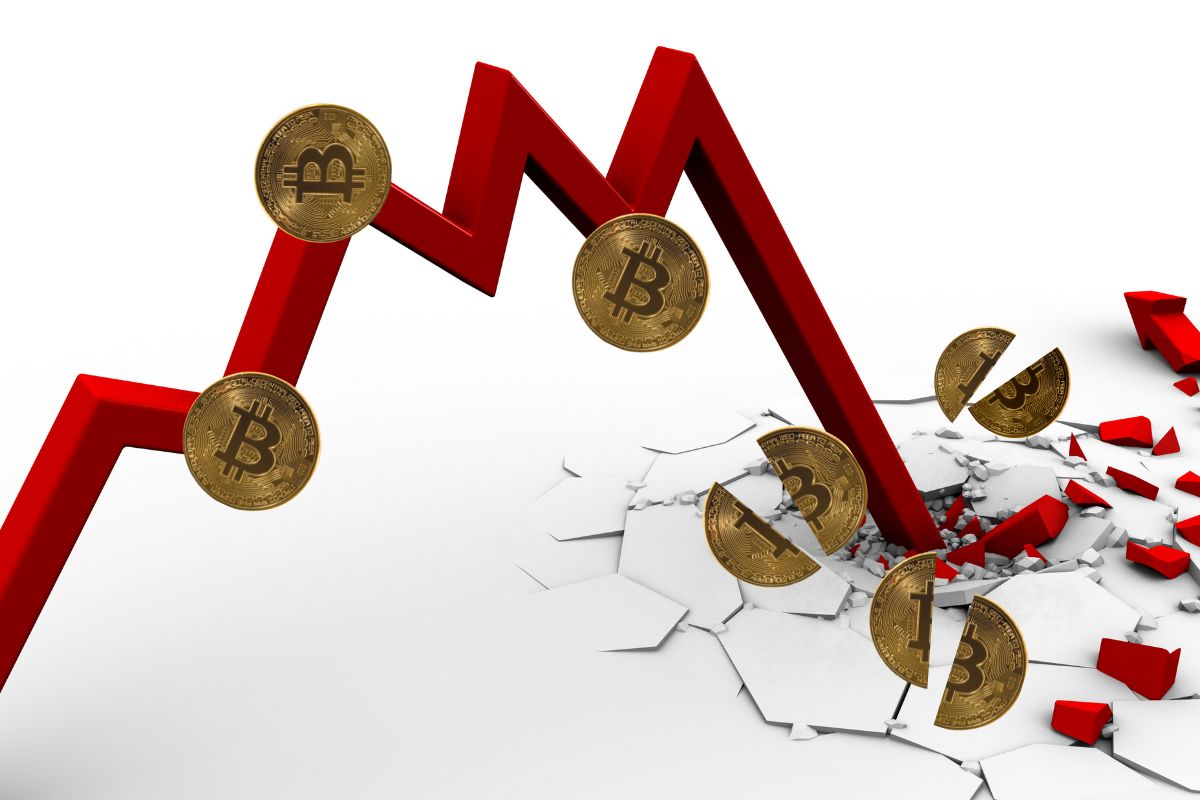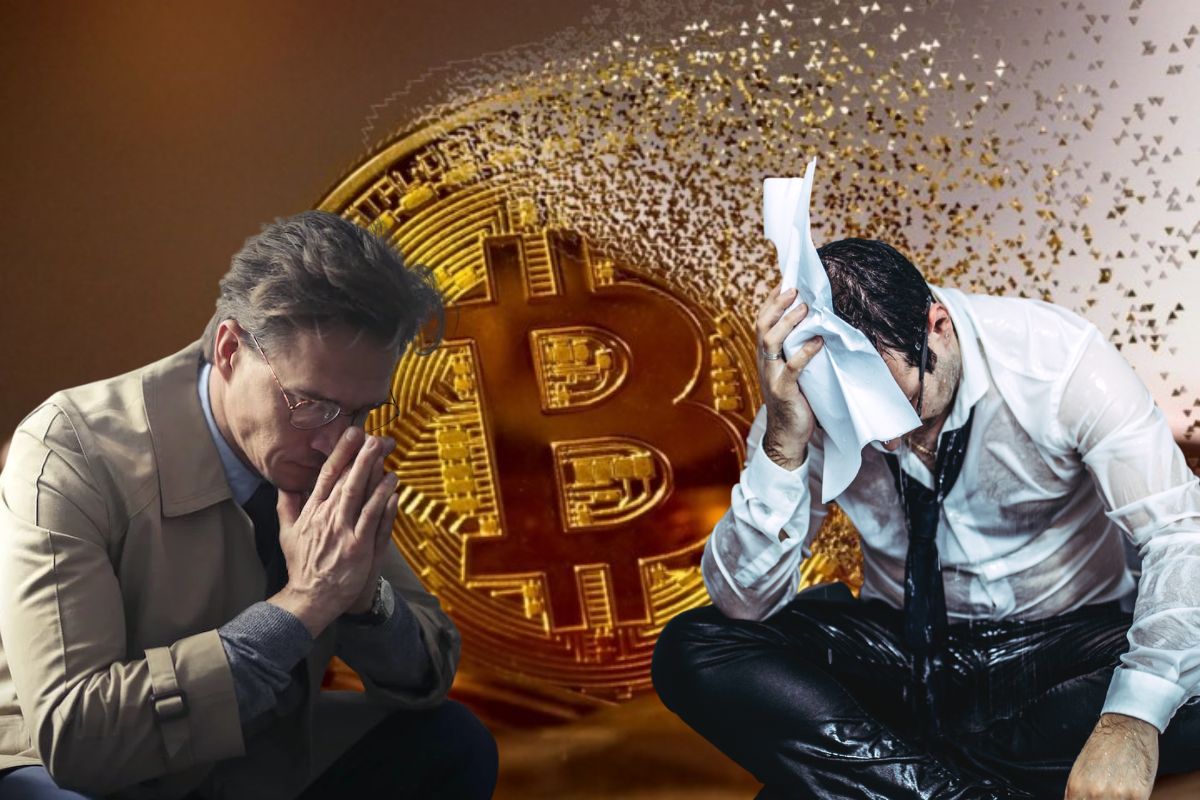The sudden and ignominious collapse of FTX, one of the world’s largest cryptocurrency exchanges, has sent significant shockwaves throughout the highly speculative and volatile world of so-called digital assets.
Bitcoin has plummeted to below US$17,000 per coin, from previous highs of almost $70,000. And other infamous cryptocurrencies have experienced similar nosedives.
Many investors have been left penniless by FTX’s collapse, with founder Sam Bankman-Fried estimating that $8 billion of funds would be required to refund every depositor in full.
Alarm is growing over the risk of a spillover into the rest of the global economy. And some have even declared that this collapse could mark the beginning of the end for crypto.
Warning signs
Investors and economic commentators alike have been shocked and shaken by this spectacular fall from grace for crypto, FTX, and its golden-boy Bankman-Fried.
But in reality, the writing was on the wall for some time. As the old proverb goes, however: there are none so blind as those who will not see.
At root, as the Marxists have been repeatedly warning for some time, cryptocurrencies are fundamentally no different to every other speculative bubble seen throughout history: whether it be the mortgage-backed securities that lay behind the 2007-08 financial crisis; the dot-com companies at the centre of the 2001 crash; or Dutch bulbs famous for the ‘tulip mania’ of the 17th-century.
Crypto’s incredible implosion – combined with the current crisis facing the tech sector and its speculative stocks and shares – reveals the underlying rottenness of capitalism today.
The vast majority of these ‘investments’, in truth, are scams and garbage. Nevertheless, seeing the uncertainty and chaos in the real economy, the capitalists are increasingly turning to such gambling in place of the grubby business of actual production.
Such speculative orgies are therefore a symptom of the impasse of capitalism on a world scale; a sign of the degeneracy and frailty of the senile capitalist system, which is unable to develop the productive forces like it did in the past.
Fraud and gambling
At the time of its collapse, Bahamas-based but US-operated FTX was the second largest cryptocurrency exchange in the world. Along with its rival Binance, it was responsible for processing the majority of crypto-related market trades across the world, taking fees from each transaction.
FTX’s downfall was triggered by a CoinDesk article warning of widespread fraud and swindling. According to journalists, the exchange’s hedge-fund arm, a firm named Alameda, also founded and owned by Bankman-Fried, was holding billions of dollars worth of FTX’s own cryptocurrency, FTT. Furthermore, reporters alleged that Alameda was using this token as collateral for its loans.
All of these loans, along with billions-of-dollars-worth of customers’ money generated from the FTX exchange, were then being used by Alameda to gamble on other cryptocurrencies.
As crypto markets began to drop earlier this year, losses cascaded throughout the system. And with each new domino that fell, hundreds of billions in ‘value’ was wiped out.
At the end of this chain reaction was Alameda, who faced margin calls on their loans as significant losses mounted. And scandalously, Bankman-Fried decided to use FTX customers’ funds to plug the gap. At one point, Alameda owed FTX around $10 billion.
House of cards
 In addition to this, billions more were invested by FTX and Alameda into highly illiquid venture capital (VC) and crypto investments. For example, $5.4 billion was invested by FTX in almost 500 crypto companies and VC funds, including $1.15 billion pumped into ‘mining’ firm Genesis Digital Assets by Alameda.
In addition to this, billions more were invested by FTX and Alameda into highly illiquid venture capital (VC) and crypto investments. For example, $5.4 billion was invested by FTX in almost 500 crypto companies and VC funds, including $1.15 billion pumped into ‘mining’ firm Genesis Digital Assets by Alameda.
Almost all of these crypto-related companies were hit hard as interest rates increased and access to cheap credit dried up, prompting jittery investors to seek safe havens for their money.
As the tide went out, dodgy firms like FTX were revealed to be naked. Leaks of his accounting spreadsheets showed that Bankman-Fried’s operation was being run just like a classic Ponzi scheme, based entirely on cryptocurrency speculation. The numbers clearly did not add up, with a big black hole sitting right where customers’ funds should be.
It was found that the parasitic profits made by FTX were being funnelled into Alameda, which was then borrowing more money on the basis of cryptocurrencies that were invented and controlled by Bankman-Fried himself – tokens that were ironically named ‘Sam coins’ by industry insiders.
Like all other cryptocurrencies, however, FTT coins have no inherent value. And their market price seems to have been secured by nothing more than FTX’s pledge to buy up any tokens for $22 a piece.
But with nothing but empty promises and arrogant assurances to support all this financial jiggery-pokery, once the real picture became apparent, Bankman-Fried’s house of cards soon came tumbling down.
Fictitious capital

Karl Marx discussed such smoke and mirrors in Capital. He called these worthless pieces of paper ‘fictitious capital’: money that circulates in the economy as capital – money invested to make more money – but without any corresponding real value.
Fictitious capital takes many forms under capitalism: from government bonds, to stocks and shares. What these have in common is that these paper tokens are traded as though they themselves contain real, intrinsic value. But in fact, they are mere claims on future values (tax revenues or corporate profits) that do not yet exist – and might never exist.
A similar process occurs when banks create money by issuing loans. It is usually the case, however, that real assets with genuine value are used to back up these loans, such as property or other commodities, providing some material anchor to the whole jamboree.
In the case of FTX and Alameda, however, money borrowed was being secured by even more fictitious capital, in the form of cryptocurrencies that were deemed to have value simply because their creators (those taking on the loans) said they were valuable based on speculative demand for crypto.
From hero to zero
According to the Financial Times, on the day before FTX’s bankruptcy, the company held just $900 million of easily-saleable assets, against a whopping $9 billion of liabilities.
In fact, as of the beginning of the month, the firm’s biggest supposed asset was $2.2 billion worth of a cryptocurrency called Serum – a decentralised token invented by Bankman-Fried!
Investors were quickly spooked as the financial viability of the company was called into question. A wave of withdrawals took place (including $5 billion in just one day, on 6 November), and the value of the company collapsed almost overnight, forcing it into bankruptcy.
Within a few days, the personal wealth of Sam Bankman-Fried – formerly considered a hero of the industry – dropped from an estimated $16 billion to zero.
Spivs and swindlers
Stripping away the fancy facade of digital assets, what we have underneath is simply another capitalist Ponzi scheme, just like those of Bernie Madoff and others before him.
Sam Bankman-Fried’s undoing is one of the swiftest and most humiliating in recent history. At one point FTX had backing from high-profile investors like BlackRock, as well as from celebrities like Katy Perry.
The crypto king also donated substantially to the Democratic Party in the USA, and was a prominent advocate for the ‘effective altruism’ cult of elite philanthropists.
In the end, however, Bankman-Fried exposed himself to be little more than a corrupt snake-oil salesman; a greedy financial fraudster, just like every other capitalist charlatan.
We should expect nothing else from a system that encourages and facilitates such swindling, gambling, and parasitic profit-making. And no amount of regulation will ever put an end to these spivs, scoundrels, and their shenanigans.
Casino capitalism

The hype surrounding cryptocurrency might be coming to an end. But such digital assets are only one example in a long history of speculative bubbles.
Such calamities are an inherent feature of the capitalist system, which is driven by profit above all else. The rampant speculation we see today – and in previous similar episodes – reflects the complete anarchy of capitalism and the market.
Instability and crisis are the irrational result of a process that is completely rational for each individual capitalist, as investors put their money wherever they can make the easiest, biggest profit.
Speculation is not something confined to pointless things like Bitcoin, or that only takes place on the stock market. It permeates the entire economy under capitalism, including life’s necessities like housing and food, fuelling rising rents and inflation.
None of this speculation provides anything useful to society, or enriches anyone but the super-rich. It is simply a means for myopic, self-interested capitalists to make a quick buck at everyone else’s expense.
The demise of FTX might mark the end of cryptocurrencies. But whether or not this occurs is beside the point. If it isn’t crypto, as long as the insanity of capitalism remains, something else will eventually come along to replace it as a vehicle for speculation; the chaotic cycle will repeat like clockwork; and every time, it will be ordinary people who suffer the consequences.
The only way to bring an end to this madness is to do away with capitalism altogether, and to fight for socialism – a higher stage of society based on conscious, rational, democratic planning of the economy.
Only then will we free ourselves of the anarchy and blind economic forces of the market, and shut the doors once and for all on the casino of capitalism.






